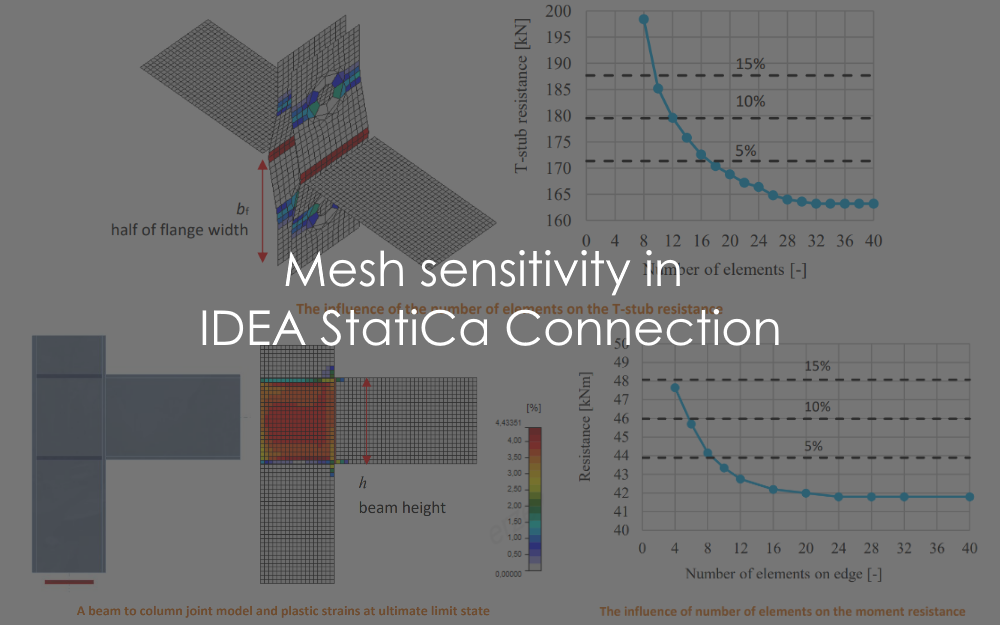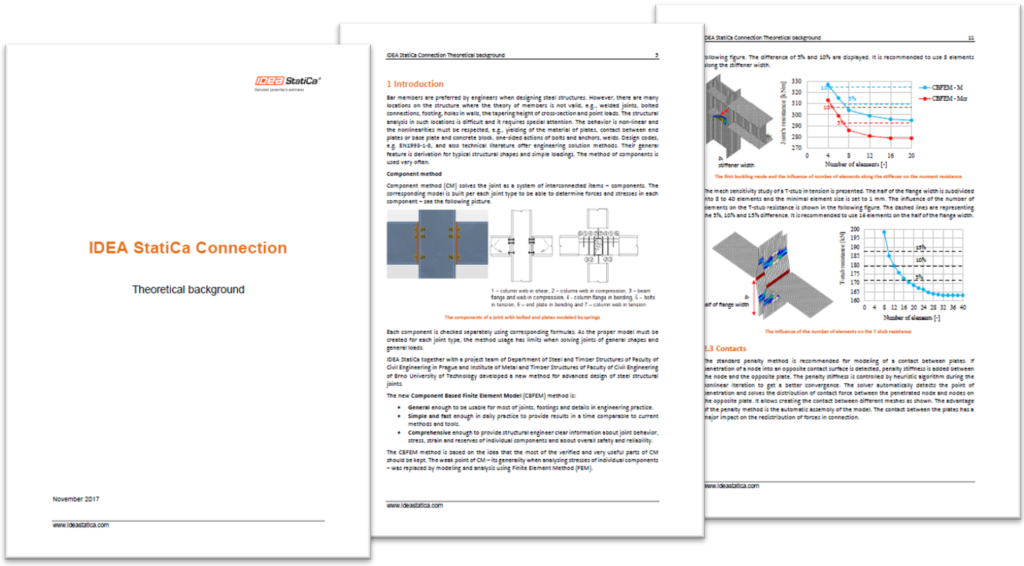Mesh sensitivity in IDEA StatiCa Connection
There are some criteria for the mesh generation in the connection model. The connection check should be independent of the element size. Mesh generation on a separate plate is problem-free. The attention should be paid to complex geometries such as stiffened panels, T-stubs and base plates. The sensitivity analysis considering mesh discretization should be performed for complicated geometries.
In IDEA StatiCa Connection, all plates of a beam cross-section have a common division into elements. The size of generated finite elements is limited. The minimal element size is set to 10 mm and the maximal element size to 50 mm (can be set in Code setup). Meshes on flanges and webs are independent of each other. The default number of finite elements is set to 8 elements per cross-section height as shown in the following figure. The user can modify the default values in Code setup. The mesh of the end plates is separate and independent of other connection parts. Default finite element size is set to 16 elements per cross-section height.
The following example of a beam to column joint shows the influence of mesh size on the moment resistance. An open section beam IPE220 is connected to an open section column HEA200 and loaded by a bending moment as shown in the following figure. The critical component is the column panel in shear. The number of the finite elements along the cross-section height varies from 4 to 40 and the results are compared. Dashed lines are representing the 5%, 10% and 15% difference. It is recommended to subdivide the cross-section height into 8 elements.
The mesh sensitivity study of a T-stub in tension is presented. The half of the flange width is subdivided into 8 to 40 elements and the minimal element size is set to 1 mm. The influence of the number of elements on the T-stub resistance is shown in the following figure. The dashed lines are representing the 5%, 10% and 15% difference. It is recommended to use 16 elements on the half of the flange width.
For more details, see our Theoretical Background.





